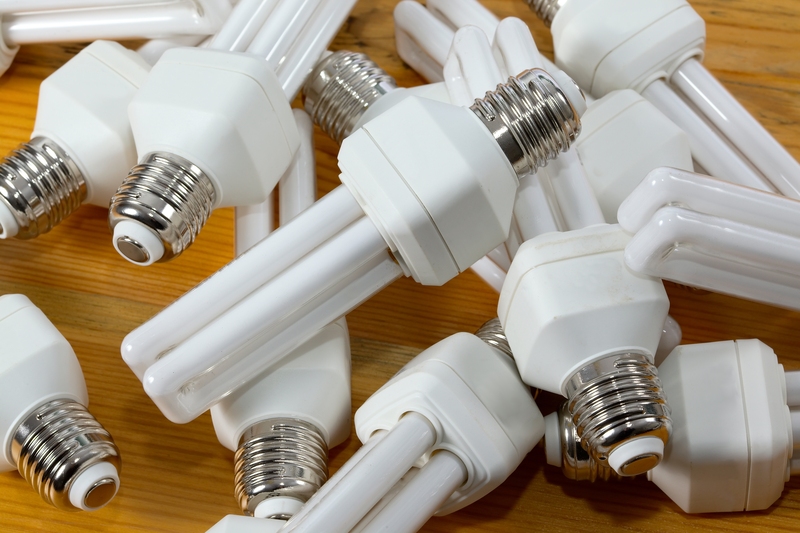Innovative Recycling Techniques for Cookware: A Comprehensive Guide
The challenges of waste management have prompted individuals and organizations to rethink traditional recycling strategies. Among the various household items that often get overlooked in this process, cookware--ranging from old pots and pans to baking trays and utensils--occupies a unique niche. Due to their mixed materials and coatings, recycling cookware is seldom straightforward. However, innovative recycling techniques for cookware have rapidly evolved, offering sustainable solutions for reusing, repurposing, and properly disposing of these kitchen staples. This article delves into groundbreaking methods and creative initiatives transforming cookware recycling, highlighting practical steps for eco-conscious households and businesses.
Why Traditional Recycling Methods Fall Short for Cookware
Cookware is typically made from materials such as aluminum, stainless steel, cast iron, or copper, and often features non-stick coatings. These composite constructions present significant challenges:
- Different melting points: Recycling centers struggle to process items with varied materials.
- Non-stick coatings: Materials like Teflon are not always recyclable and can complicate sorting.
- Handles and accessories: Parts made from plastic or wood can't go into regular metal recycling streams.
Consequently, standard recycling facilities frequently reject cookware, causing a majority of discarded pots, pans, and trays to end up in landfills. Innovative recycling solutions for cookware are therefore necessary to divert these items from waste streams and encourage more circular, sustainable use.

Emerging and Effective Cookware Recycling Techniques
1. Specialized Metal Recovery
One major advancement in the realm of cookware recycling is the rise of specialized metal recovery services. These facilities employ advanced technology, such as eddy current separators and smart shredding systems, to efficiently isolate non-ferrous metals (like aluminum and copper) from mixed materials.
- The cookware is mechanically dismantled, removing plastic handles and separating metal bases.
- Thermal or chemical treatments are applied to break down non-stick coatings or bake off organic materials.
- The purified metals are then melted and repurposed into raw materials for new products or even recycled cookware.
These specialized recyclers often operate through municipal or partnered drop-off programs, making it far easier for consumers to dispose of old cookware sustainably.
2. Upcycling: Giving Cookware a New Life
As awareness of recycling cookware grows, so does the trend of upcycling--the process of transforming discarded items into products of higher value or environmental benefit.
- Planters: Old pots and pans make excellent planters for indoor and outdoor gardens.
- Wall decor: Artistic individuals have creatively repurposed cookware into clocks, mirrors, and unique wall art.
- Organizers: Muffin trays or baking pans can be transformed into drawer organizers or craft storage solutions.
Upcycling not only prevents cookware from ending up in landfills, but also offers an economical and creative outlet for individuals interested in DIY sustainability.
3. Non-Stick Coating Removal Technology
A significant bottleneck in recycling old pans is the common presence of non-stick coatings. Recent innovations include:
- Cryogenic stripping: This technique uses extremely cold substances to embrittle non-stick surfaces, making them easier to remove.
- Laser ablation: Lasers target and vaporize synthetic coatings without damaging the underlying metals, allowing for more efficient metal recycling.
- Eco-friendly chemical removers: These solvents break down non-stick surfaces without releasing toxins, preparing pans for full metal recovery.
These technologies are particularly vital as they make large-scale cookware recycling feasible, addressing previous limitations and reducing potential contamination.
4. Community Collection Programs and Manufacturer Take-Backs
Forward-thinking municipalities are launching dedicated cookware recycling drop-off points or hosting regular collection events, where cookware is aggregated and directed toward specialized recyclers.
- Some cookware brands and retail chains are now offering take-back programs, where you can return your used items in exchange for discounts or store credit.
- These programs ensure that cookware goes directly to facilities equipped for effective recycling and upcycling.
Participating in these community initiatives helps close the loop on cookware waste, fostering sustainability and corporate responsibility.
Alternative Uses for Cookware: Reducing the Need for Recycling
Sometimes, the best way to recycle an old pan is to keep it out of the recycling loop altogether by discovering creative reuse opportunities. Here are several suggestions:
- Charitable donations: Many community kitchens, shelters, or charities welcome gently used cookware, extending its usable life.
- Repair and refurbish: Sometimes, a thorough cleaning, handle replacement, or re-seasoning can make an old skillet as good as new.
- Craft projects: Utilizing cookware as the basis for art installations, children's crafts, or interactive exhibits educates and engages while reducing waste.
By finding new ways to use old cookware, individuals can contribute to a circular economy and reduce their environmental footprint.
Innovative Materials and Design for Recyclable Cookware
One of the most meaningful innovations in this space is the move towards designing cookware for recyclability from the outset. Manufacturers are exploring:
- Modular cookware: Removable handles, uncoated metal bases, and interchangeable lids make disassembly and recycling far simpler.
- Single-material construction: Cookware made solely from stainless steel or aluminum, without synthetic coatings, streamlines the recycling process.
- Biodegradable coatings: Some companies have developed new non-stick surfaces made from plant-based materials, biodegradable after the cookware's usable life.
Incorporating recycling considerations in design is essential to the long-term success of cookware sustainability.
Challenges and Limitations of Advanced Cookware Recycling
Despite significant progress, a handful of challenges remain in the drive towards advanced cookware recycling:
- Awareness gap: Many consumers remain unaware of local recycling options or proper disposal protocols for cookware.
- Infrastructure limits: Not all recycling centers are equipped for metal recovery or specialized de-coating processes.
- Economic barriers: Advanced recycling and upcycling can be more costly than landfill disposal, especially in areas with limited support.
Addressing these obstacles will require ongoing collaboration among manufacturers, governments, businesses, and consumers.
How to Recycle Cookware Responsibly: A Step-by-Step Guide
Step 1: Assess the Condition
Before discarding, determine if your cookware is still usable. Donate any items in good shape.
Step 2: Research Local Recycling Programs
Contact your municipal recycling service to ask about drop-off events or accepted materials. Search for specialized metal recyclers if necessary.
Step 3: Prepare Your Cookware
- Remove all plastic, rubber, or wooden handles and accessories.
- Clean cookware to eliminate food residue and grease.
- If possible, separate by material (e.g., aluminum from stainless steel).
Step 4: Utilize Manufacturer Take-Backs
Check if the brand of your cookware offers a take-back recycling program and follow their instructions for shipping or drop-off.
Frequently Asked Questions About Cookware Recycling
Can all types of cookware be recycled?
Most metal-based cookware can be recycled through specialized facilities, but items with complex coating or multiple materials may be more challenging.
What should I do with non-stick pans?
Seek out recyclers with the technology to handle non-stick coatings, or use take-back programs offered by manufacturers.
How do I know if my cookware is accepted for recycling?
Always check specific rules with your local recycling facility or consult online resources like Earth911 for regional guidelines.

The Future of Cookware Recycling: Toward a Circular Kitchen
As innovative cookware recycling techniques gain momentum, there is an exciting shift towards a circular kitchen economy--a space where products are thoughtfully designed, reused, and properly recycled at the end of life. The synergy of advanced technology, creative upcycling, responsible consumer action, and visionary manufacturing will play a pivotal role in reducing waste and resource consumption.
For households, businesses, and public institutions, staying informed about the latest recycling and disposal methods is essential to supporting this transition. By embracing responsible recycling and upcycling strategies, everyone can play a role in keeping cookware out of landfills and building a more sustainable future.
Conclusion: Lead the Way in Cookware Recycling Innovation
The path to sustainable cookware management lies in innovative recycling, upcycling, and responsible material design. Whether you're replacing a single frying pan or managing equipment for a hospitality group, consider the many options for extending the life and value of your cookware. By leveraging the latest developments in cookware recycling, you not only reduce environmental impact but also inspire others to cook up a greener planet.
- Explore specialized recycling programs and services.
- Practice creative upcycling at home.
- Support brands dedicated to easy-to-recycle cookware.
Together, let's turn yesterday's pots and pans into tomorrow's resources.
```